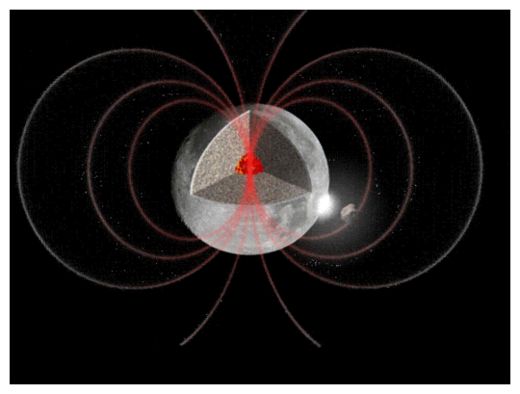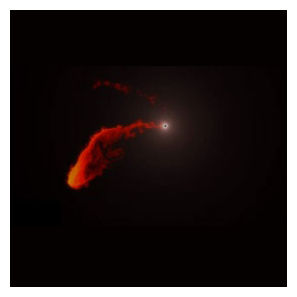
© M.-H. Deproost, ORB, BelgiqueThis illustration shows one suggested mechanism for creating an ancient magnetic field on the moon. In this scenario, impacting space rocks on the moon would create instability in the moon's core that could lead to a dynamo that creates a magnetic field.
The moon generated a surprisingly intense magnetic field until at least 3.56 billion years ago, 160 million years longer than previously thought, a new study reports.
These findings could shed light not just on the magnetic field of
the moon, which is now extremely weak, but on that of asteroids and other distant worlds, investigators added.
Earth's magnetic field is created by its internal dynamo, which itself is generated by the planet's churning molten metal core. Research increasingly suggests that the moon once had a dynamo as well, with evidence of magnetism found in lunar rocks returned by Apollo astronauts.
Models of the moon's core suggest its dynamo should have lasted only until about 4.1 billion years ago. However, last year, scientists revealed that the
moon possessed a magnetic field for much longer than previously thought, with a powerful dynamo in its core from 4.2 billion years ago to at least 3.72 billion years ago.
Researchers have proposed
two possibilities to explain why the moon's dynamo lasted so long. One possible explanation is that
giant cosmic impacts set the moon lurching enough to drive its dynamo. Another explanation has to do with how the moon's core spins around a slightly different axis than its surrounding mantle layer, generating wobbles - known as precession - that could dramatically stir its core.
The cosmic-impact idea is supported by the fact that the moon experienced massive collisions until around 3.7 billion years ago, such as the one that created the 715-mile-wide (1,150 kilometers) Mare Imbrium, among other craters.


